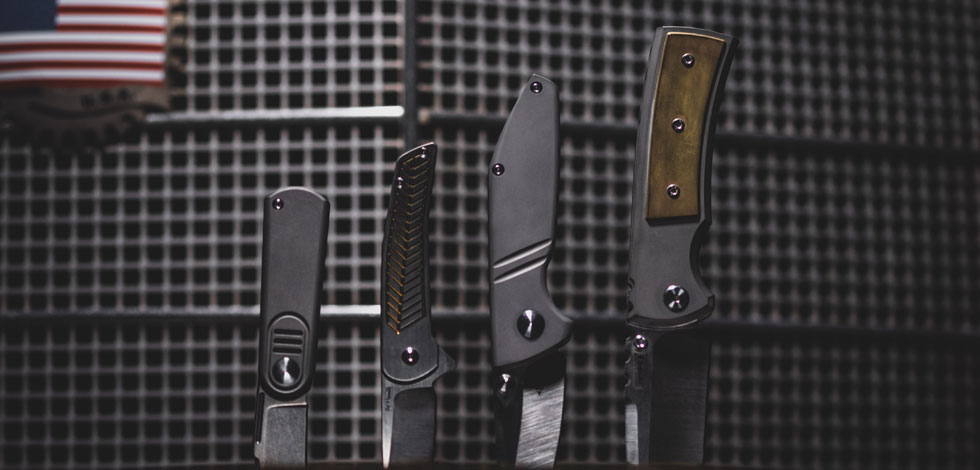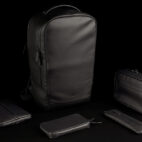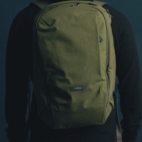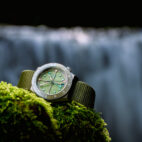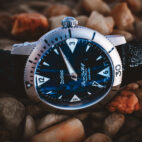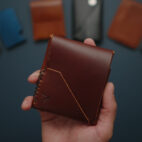4 Common Opening Methods for EDC Pocket Knives
Hey all, Shawne here, Brand Manager for Urban EDC Supply.
This is my first editorial for Carryology and I couldn’t be more excited! We have been getting a lot of questions on the different opening methods for EDC knives, so I wanted to break it down for you: the good, the bad, and the awkward. I hope you dig it.
The Nail Nick
The nail nick is most commonly found on the slip joint and manually opened knives, like the Swiss Army Knife. The milled groove allows for your nail to dig in and provide enough purchase to open the knife. If you want to get even fancier, there are nail nick tools that are like small prybars that fit into the nick and assist in the opening. Nail nicks can be found in many forms, from short crescent grooves, to longer cuts that mimic a fuller down the length of the blade. This opening method is best for when you don’t mind using two hands, and don’t want to scare your non-collecting friends the next time you need to cut a piece of pie.
Pros:
- Easy to learn
- Traditional, non-threatening
- Non-locking blades are typically legal in more places
Cons:
- Requires two hands to operate
- Typically means there is no lock on the blade
A good example: Victorinox Swiss Army Knife Alox – Champagne.
The Thumb Stud
The thumb stud, second on my list of preferred opening methods (second only to the fidget factor of the front flipper), comes in two flavors. First, you have the true thumb stud, which has one lug protruding from the blade. In order to open this, hold the knife so that your fingers are not on the lock bar. Then, apply pressure with your thumb and follow the opening path of the knife while applying pressure to the stud. You can slow open the knife, allowing your thumb to ride the stud all the way until the lock position. Alternatively, using your flexed thumb on the thumb stud, you can build slight pressure and then quickly move your thumb in the opening motion without following the track. This will give you that satisfying flick open and subsequent lock sound.
The Dual thumb stud, like that on the Efros Ice Lite and Chaves Ultramar, is the same in concept to the traditional thumb stud, but this one has two lugs protruding from both sides of the blade. This allows you to use your thumb, as stated above, or your index or middle finger on the bottom lug. The concept is the same, but you can do it from underneath the knife, while maintaining a solid grip.
Pros:
- Sturdy one-hand opening option
- Dual Thumb Studs allow for thumb or index/middle finger opening
- Good for rapid or slow deployment
Cons:
- Can be tough to master for the beginner
- Sometimes harder to use with work gloves given the closeness of the stud to the frame
Some good examples are:
Brian Efros / Alliance Designs Ice Lite – Titanium (Exclusive).
Chaves Knives Ultramar Redencion Drop Point – Titanium w/ Patina’d & Lasered Brass Inlay (Exclusive).
Chaves Knives Ultramar Redencion Drop Point – Titanium w/ Patina’d Brass Inlay (Exclusive).
The Flipper Tab
The flipper tab is probably (I know I am making someone angry) the easiest quick-open technique to master. A flipper, like a thumb stud, is generally found on a knife with a locking mechanism. For instance, the Pat Hammond Mini Scout is a frame-lock folding knife with a flipper tab. These types of knives are great for one-hand deployment – which is necessary for any number of scenarios from needing to cut fishing line while maintaining a taut line, to needing to cut a seat belt while your other arm is pinned. Additionally, flipper tabs are easier to use with gloves on, which is why they are my go-to for my boot knife.
To deploy a flipper knife, hold the knife in a way (for instance when a frame-lock is used) where your fingers are not on the lock bar. Typically, I will place mine on the clip. Using your index finger, create some pressure on the knife’s detent and then quickly push down and in, causing the blade to fire out. There! You have mastered the flipper tab!
Pros:
- Fun to learn, easy to master
- One-handed opening
- Ambidextrous
- Fast deployment
Cons:
- Protruding flipper tab
- Hand placement – sometimes the way you hold your hand to open the knife is not the same position you would be in to use the knife
A good example is:
Pat Hammond / Alliance Designs Scout – Titanium.
The Front Flipper
As I mentioned earlier, the front flipper brings with it a lot of fidget factor, in my opinion. Being able to roll your thumb over the top of the knife and quickly knock the tang in to create a swooping open motion is pretty epic. This is why I’m hooked on the Baby Barlow designed by Justin Lundquist.
There are two common methods to opening a front flipper. Just like with the other locking knives mentioned, you will want to ensure that your fingers are not putting any pressure on the lock bar. The first method is to choke down a bit on the knife, place your flexed thumb on the tab and roll your thumb quickly over the top. The second method requires (if you have smaller hands like I do) to choke up on the knife a bit. You then arch your index finger over the top of the knife and pull the tab back towards your hand quickly, firing out the blade. Like thumb studs and flippers, front flippers are great for one-handed opening. However, I wouldn’t recommend them for use while wearing gloves, as it is important to get the correct purchase on the knife.
Pros:
- Increased fidget factor
- Upward protrusion of the flipper tab to be inline with the knife, rather than out the side
- Can be operated by the thumb or index finger
Cons:
- Hand placement for opening is sometimes not the same for use, requiring adjustment
- Harder to master
Some good examples are:
Lundquist Baby Barlow – Black G10 (Urban Series).
Lundquist Baby Barlow – OD Green G10 (Urban Series).
Lundquist Baby Barlow – Titanium (Urban Series).
So, there you have it, a rundown on some of the most popular knife opening methods and how to master them!
Enjoyed this article? Why not check out these too:
3 Awesome and Unique Urban EDC Supply Collaborations
7 Amazing Golden EDC Essentials
5 Unconventional Multi-Functional EDC Tools





 Carry Awards
Carry Awards Insights
Insights Liking
Liking Projects
Projects Interviews
Interviews
